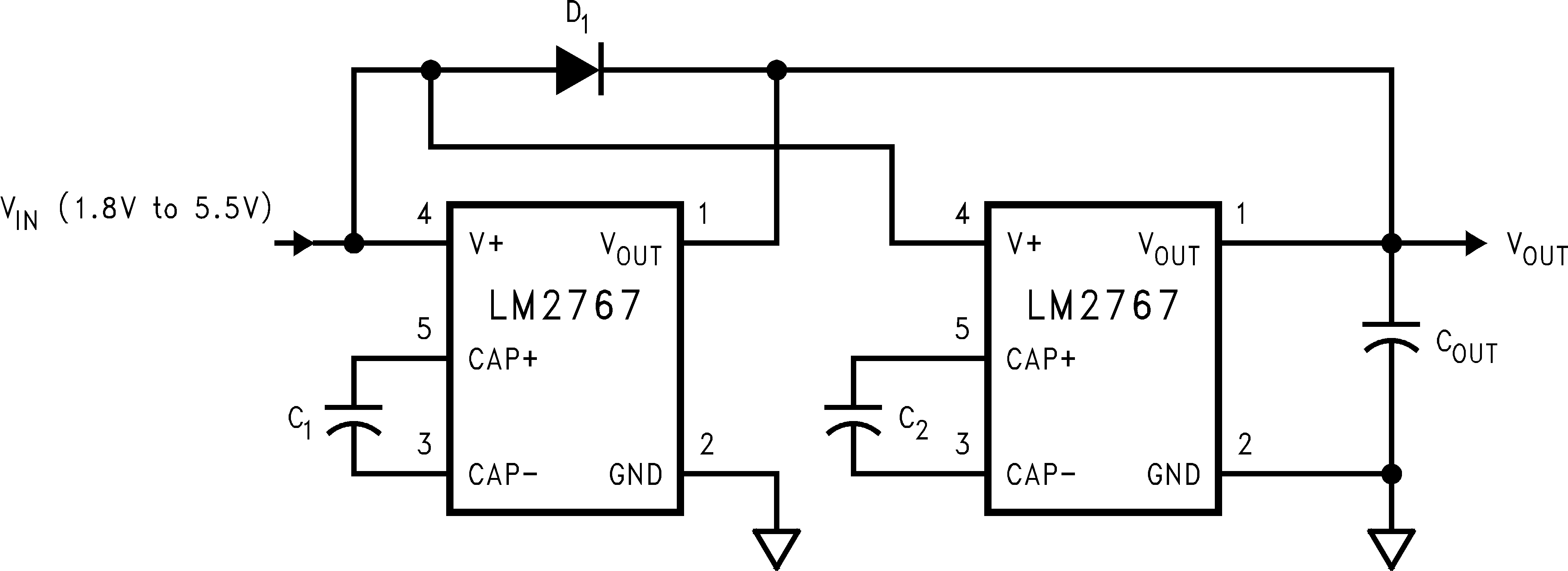SNVS069E February 2000 – January 2022 LM2767
PRODUCTION DATA
- 1 Features
- 2 Applications
- 3 Description
- 4 Revision History
- 5 Pin Configuration and Functions
- 6 Specifications
- 7 Parameter Measurement Information
- 8 Detailed Description
- 9 Application and Implementation
- 10Power Supply Recommendations
- 11Layout
- 12Device and Documentation Support
- 13Mechanical, Packaging, and Orderable Information
Package Options
Mechanical Data (Package|Pins)
- DBV|5
Thermal pad, mechanical data (Package|Pins)
Orderable Information
9.2.2.3 Paralleling Devices
Any number of LM2767 devices can be paralleled to reduce the output resistance. Because there is no closed loop feedback, as found in regulated circuits, stable operation is assured. Each device must have its own pumping capacitor C1, while only one output capacitor COUT is needed as shown in Figure 9-3. The composite output resistance is:
Equation 4. 

 Figure 9-3 Lowering Output Resistance by Paralleling Devices
Figure 9-3 Lowering Output Resistance by Paralleling Devices